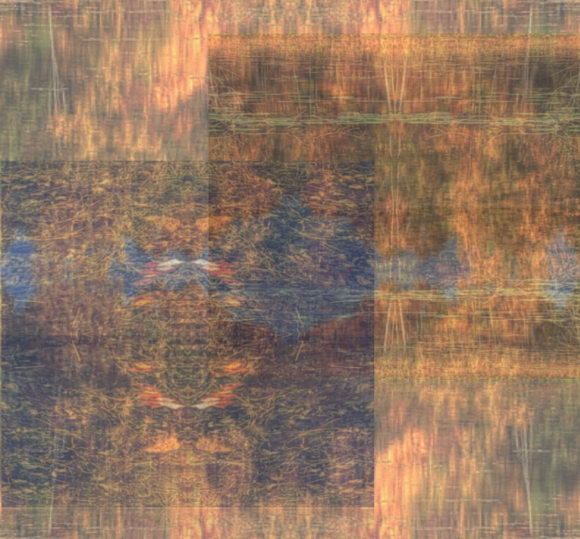The account which I developed in my previous post mostly overlaps with Jung’s view, but it also differs from it in an important respect.

1. For Jung, an individual subject is at all times comprised of a consciousness and various layers of the unconscious, some of which are personal, while others are collective. Whenever the subject engages with the unconscious (both the personal and the collective unconscious), they may integrate contents from it into consciousness, thereby growing as a person.
Now we would not go wrong (though we would oversimplify) if we were to put this in a slogan like: “individual growth means to learn (i.e., become conscious of) things that were previously unconscious”. And this is where Jung’s view and the account I have given agree.
2. Jung himself uses the mirror metaphor to express this. In a foundational essay that lays out his views on the collective unconscious, he begins by pointing out how water frequently appears as a symbol of the unconscious (“what lies beneath the surface”) in dreams and myths, and the like (GW IX/I, §40). He then goes on:
Wer in den Spiegel des Wassers blickt, sieht allerdings zunächst sein eigenes Bild. Wer zu sich selber geht, riskiert die Begegnung mit sich selbst.
GW IX/I, §43
Since the unconscious is part of one’s own (larger) self, an engagement with it is, in fact, a confrontation with oneself, thus a process of acquiring self-knowledge (or self-understanding). This is of course both valuable and uncomfortable, even terrifying:
Dies ist die erste Mutprobe auf dem inneren Wege, eine Probe, die genügt, um die meisten abzuschrecken, denn die Begegnung mit sich selber gehört zu den unangenehmeren Dingen, denen man entgeht, solange man alles Negative auf die Umgebung projizieren kann.
GW IX/I, §44
What we see, when looking into the mirror, are those parts of ourselves which we would normally avoid to look at, and which we carefully also hide from others. These are part of the personal unconscious and make up, in Jungian terminology, our “shadow”. What we look like when we suppress and hide them, the false face that we show ourselves and the outside worlds as long as we ignore the shadow, is called the “persona” (in the ancient sense of that term, meaning a mask). Thus the unconscious as a mirror shows precisely our real selves, including the shadow, and not the persona:
Der Spiegel schmeichelt nicht, er zeigt getreu, was in ihn hineinschaut, nämlich jenes Gesicht, das wir der Welt nie zeigen, weil wir es durch die Persona, die Maske des Schauspielers, verhüllen. Der Spiegel aber liegt hinter der Maske und zeigt das wahre Gesicht.
GW IX/I, §43
3. We are now in a position to see where the account I have given and Jung’s view differ.
In my account, mirrors symbolize a form of knowledge about ourselves; and this knowledge can be arrived at both on a first-person route and on a third-person route. In many cases (perhaps in most), subjects have this knowledge about themselves, having arrived at it on the first-person route. But sometimes, they have lost it, and then it is up to others (their social environment, possibly a therapist) to hold up a mirror and show them, via the third-person route. They hope that in this way they can enable the subject to see it again, and also re-learn to use the first-person route to get to that self-knowledge. But if this function of a mirror is blocked and does no longer work at all — i.e. if a person “loses his mirror image” —, then they are in serious trouble (in Hoffmann’s story symbolized by demonic forces which push the protagonist into destructive, even criminal behaviors).
In Jung’s view, in contrast, the mirror function is performed only by the unconscious. It is not others (the social world, or a therapist) who provide knowledge about themselves to the subject. There is no such thing, we might say, as a third-person route. The only route is a first-person route, which of course in Jungian terminology runs from the personal unconscious part of the Self (first person) to the conscious part of the Self (also first person), and thus is in a strange way also a “kind of” third person route. But the crucial difference is that, even for this “kind of“ third person, the mirror is not held up by other people, but by unconscious forces.
4. What prevents Jung from locating the mirror function in other people, I suspect, is his notion of the “persona” as a mask. Since we all have, according to Jung, constructed a false facade that we show to others, they are unable to see us how we really are. To stay within the metaphor: if others were to hold up a mirror to us, in that mirror we could only see the persona (not our real selves), for what we display to others — and what therefore would be reflected back to us, in the mirror — is the mask, and not the real self.
For Jung to have an account where a social circle or a therapist can hold up a mirror that shows the subject their real self, and thus provide some self-knowledge to them via a third-person route, he would have to make the extra claim that the social circle or therapist can also see through the mask, at least on occasion. It is true that this is, in itself, a plausible assumption, and I think a case could be made that it can also by found to be held by Jung in other places (see e.g. GW IX/II, §44). Still, it introduces a tension in his view: sometimes he seems to make that assumption, whereas a other times he wants to say that it really is only the unconscious which can act as the source of such mediated self-knowledge, such as in the passages quoted above.




[…] view, the former thoughts, emotions, and behaviors are collectively called the ‘Persona’ — the masks we present to the outside world — whereas the latter form the […]
[…] our psychology (e.g. empathy) and suppresses others (e.g. irritably). The result is a well-rounded “persona”: a set of behaviors that fits our environment and the goals we have in it, but also, in some sense, […]
[…] all human beings develop an ego (consciousness), and in the course of their early life also a persona (a set of social roles they habitually enact). We all do this, and insofar we do (generally, in […]